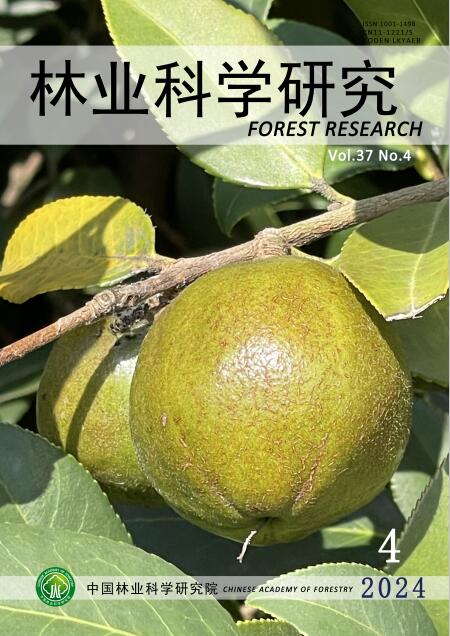Resin Flow in Loblolly and Shortleaf Pines Used by Red-Cockaded Woodpeckers
Q4 Agricultural and Biological Sciences
引用次数: 0
Abstract
We measured resin flow in loblolly (Pinus taeda L.) and shortleaf (Pinus echinata Mill.) pines in stands used by red-cockaded woodpecker, Picoides borealis (Vieillot), in the Angelina and Davy Crockett National Forests in eastern Texas. We also measured resin flow in a mature loblolly pine stand not used by the woodpeckers. Resin flow varied by study area, species, and stand position. In woodpecker stands, pines experiencing low levels of competition seemed better able to tolerate the continual resin drainage associated with red-cockaded woodpecker resin well pecking. In the Angelina National Forest, all new cavity trees excavated during the study were on forest edges. In the non-woodpecker stand, edge trees had significantly better resin flow. These results indicate that the woodpeckers choose trees most likely to be good resin producers. They also indicate that silviculture in loblolly and shortleaf pine stands should favor edge and an open stand habit when red-cockaded woodpeckers are a major management consideration and that potential resin production can be measured in both cavity pines, and pines being considered for red-cockaded woodpecker introduction.红冠啄木鸟对火炬松和短叶松树脂流动的利用
在德克萨斯州东部的安吉利娜和戴维克罗克特国家森林中,我们测量了红冠啄木鸟Picoides borealis (Vieillot)使用的林分上的火炬松(Pinus taeda L.)和短叶松(Pinus echinata Mill.)的树脂流动。我们还测量了啄木鸟不使用的成熟火炬松林分的树脂流动。树脂流动因研究区域、树种和林分位置而异。在啄木鸟林中,经历低水平竞争的松树似乎能够更好地忍受与红冠啄木鸟啄树脂井相关的持续树脂排放。在安吉莉娜国家森林,研究期间挖掘的所有新洞树都在森林边缘。在非啄木鸟林分,边缘树的树脂流动明显更好。这些结果表明,啄木鸟选择的树木最有可能是好的树脂生产者。研究结果还表明,当红冠啄木鸟是主要的管理考虑因素时,火炬松和短叶松林分的造林应倾向于边缘和开阔的林分习惯,并且潜在的树脂产量可以在腔松和考虑引入红冠啄木鸟的松树中进行测量。
本文章由计算机程序翻译,如有差异,请以英文原文为准。
求助全文
约1分钟内获得全文
求助全文
来源期刊

林业科学研究
Environmental Science-Ecology
CiteScore
0.90
自引率
0.00%
发文量
4834
期刊介绍:
Forestry Research is a comprehensive academic journal of forestry science organized by the Chinese Academy of Forestry. The main task is to reflect the latest research results, academic papers and research reports, scientific and technological developments and information on forestry science mainly organized by the Chinese Academy of Forestry, to promote academic exchanges at home and abroad, to carry out academic discussions, to flourish forestry science, and to better serve China's forestry construction.
The main contents are: forest seeds, seedling afforestation, forest plants, forest genetic breeding, tree physiology and biochemistry, forest insects, resource insects, forest pathology, forest microorganisms, forest birds and animals, forest soil, forest ecology, forest management, forest manager, forestry remote sensing, forestry biotechnology and other new technologies, new methods, and to increase the development strategy of forestry, the trend of development of disciplines, technology policies and strategies, etc., and to increase the forestry development strategy, the trend of development of disciplines, technology policies and strategies. It is suitable for scientists and technicians of forestry and related disciplines, teachers and students of colleges and universities, leaders and managers, and grassroots forestry workers.
 求助内容:
求助内容: 应助结果提醒方式:
应助结果提醒方式:


